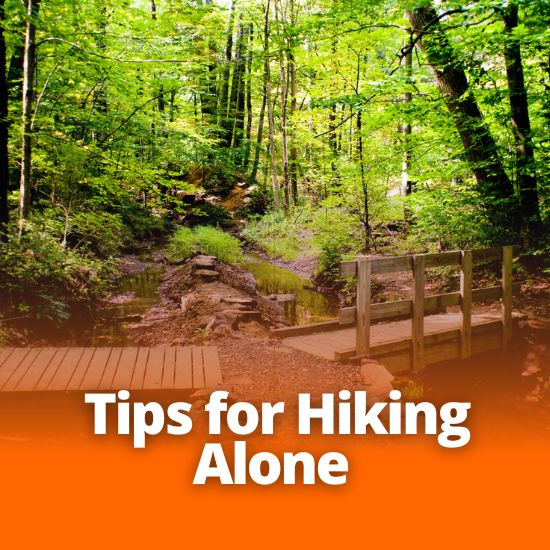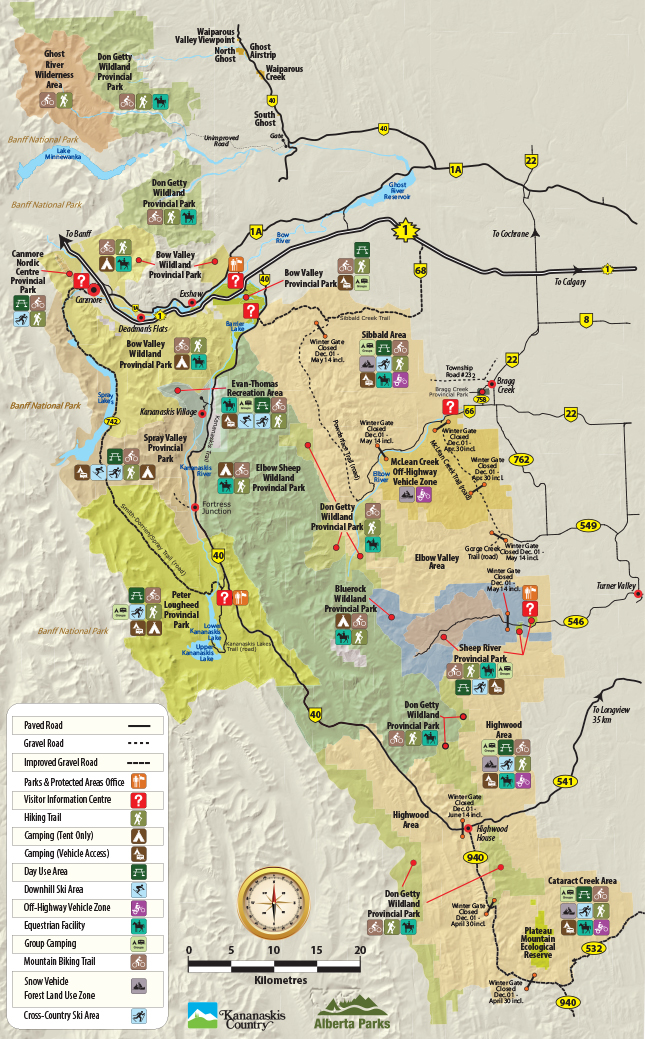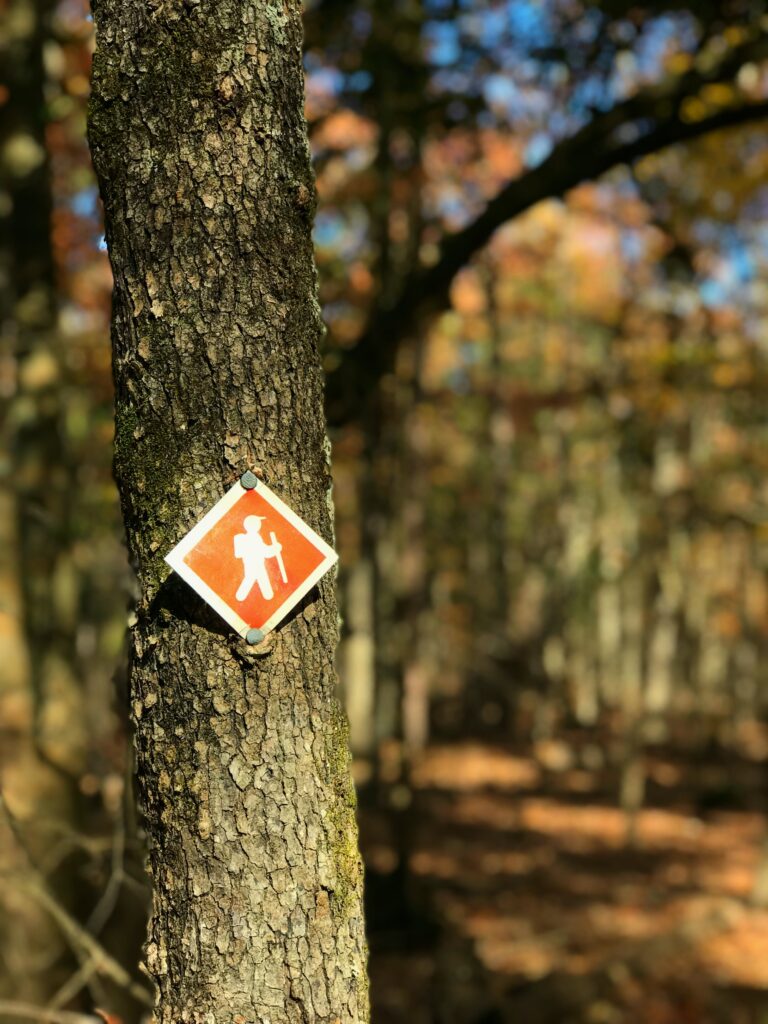
Tips for Hiking Alone
Now yes, hiking is often a social activity but sometimes it’s just so relaxing to hit a trail on your own. Here are some tips to hike solo safely and responsibly.
Also, remember to maintain appropriate trail etiquette even when on your own and to Leave No Trace.
The Basics
Here’s what we’ve learnt through personal experience and research: First, most of the time the people you’ll meet on the trails are super friendly and it’s a really good idea to greet people with at the very least a nod and smile. Sometimes you’ll get a heads-up on future trail conditions and it’s also a good safety tip for other people to be aware of you while solo.
Now not to say there aren’t weirdos out there, but choosing your trail wisely and using your common sense can help you avoid uncomfortable encounters.
Second, you have to be comfortable on your own and depending on yourself on the trail. This means giving yourself that final push to get over the last hill and learning to trust your gut should tricky situations arise.
Bonus though, you get to hike at your own pace, stopping for water or a snack when you need, and can take as many pictures of flowers or gorgeous vistas as you want. It’s freeing not to worry about maintaining the same pace as a group.
So here we go with our major tips for a solo hiker:
1.Tell Someone Where You Are/Where You’re Going
Text, call, smoke signal. However you can communicate with a reliable friend or family member, tell them where you’re going as explicitly as possible. None of this “oh just one of the west trails in the valley” no, the exact location, name, date, time, weather forecast! Tell that person how long you expect to be on the trail and then again when you get back to civilization, not just to the trail head.
2. Don’t Overly Challenge Yourself
This goes hand-in-hand with our next tips, but basically don’t attempt a marathon thru-hike for your first solo excursion. Mistakes are made when you’re tired and there’s no need to push your limits to the point of detriment when you’re alone. Go ahead and challenge yourself sure, but be smart about it and know your limits and stamina.

3. Choose Your Trail With Smarts
Pick a well-maintained trail for your first hike where there is little or no chance of getting lost. For safety, on your very first hike go with a trail below your personal skill level in regards to conditions and terrain. Your first solo hike is not where you take risks or go somewhere unfamiliar; pick a trail you’ve done before with friends and know decently well. And if you’re new to hiking in general, start small with shorter hikes between 1-2 hours to build up your confidence and endurance over time. If you have to turn around part way don’t be discouraged! Make note of how far you got to beat your distance next time.
4. Prepare, Prepare, Prepare!
Have enough food and water to keep up your energy and stay hydrated, in fact bring more than you think you’ll need. Keep your pack full with a few necessities like a first aid kit, headlamp, and extra layer of clothing in case you’re met by a weather change or are out longer than expected.

5. Forecast
Speaking of weather, pick a day where it will be clear and sunny (but hopefully not so hot to cause heatstroke). Hiking during the rain can present additional hazards so check the weather forecast before you head out. We still recommend that additional layer (which could be a light raincoat) just in case. What’s that saying about when we plan?
6. Stay Aware of Your Surroundings
Two points here: know the local wildlife in the area and don’t wear headphones. While hiking to your personal soundtrack can be tempting, when hiking alone it leaves you unaware of your surroundings: that means animals, other hikers, or changes in the weather. So leave the headphones in the car. And as for animals, knowing how to respond to the local wildlife is crucial to safety as different responses to animals such as bears can determine whether they’ll flee or fight. Check out our Bear Safety post for some tips.
7. Stay on the Trail
Don’t go wandering off into unmarked wilderness, especially when you’re on your own. Keep a trail map on hand, even if you’re following one on your phone. In the case that your phone dies or you lose service a paper map can help you stick to your trail, locate trail markers, and direct where to go at junctions.
8. Basic Common Sense
The best way to keep yourself safe is to educate yourself about how to stay safe while hiking. You can take a basic wilderness first aid course and look up tips like these as places to start. And of course: trust your gut. If something doesn’t feel right it’s time to skedaddle. Some weirdo giving you a look? Get defensive. Think it’s getting too late to continue and get back at your current pace? Turn around. You’re out for some exercise and relaxation, no serious risks are required for those.
9. Enjoy yourself!
Relax into your surroundings, focus on the fresh air and sun. Let yourself forget responsibilities and just enjoy the moment.
What’s your favorite solo hike or has this inspired you to try going out on your own? Let us know!